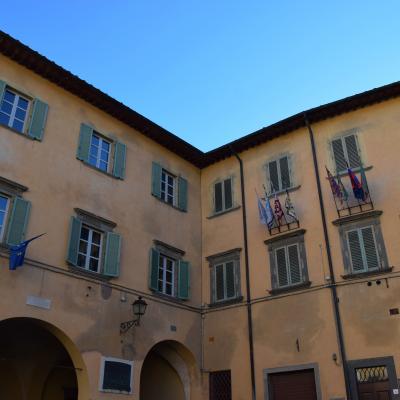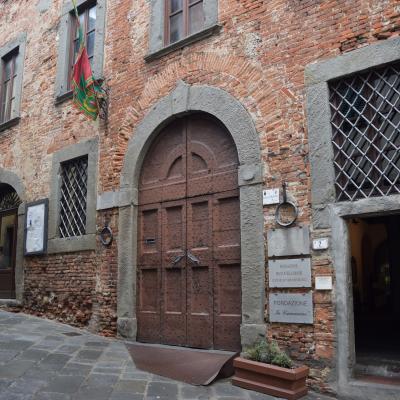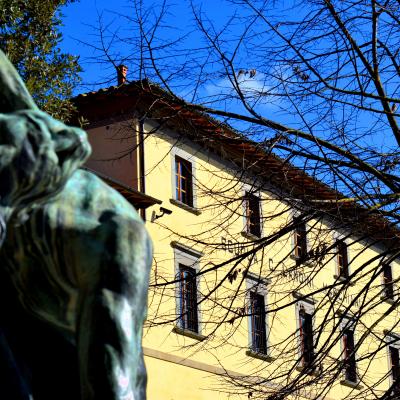PALACES
Palazzo del Podestà
The Palazzo del Podestà, or Palazzo Pretorio, is a two-storey building bordering on two sides with Piazza Vittorio Veneto. Its construction began in 1304, at the same time as the opening works of the square wanted by the political institutions that now needed larger and more decent public spaces. At the end of the seventeenth century the area was further enlarged through the demolition of the ancient Chancellery building which occupied part of the western side of the square.
The Palazzo Pretorio has undergone repeated and profound structural and destination changes over time. In addition to being the residence of the podestà, it was the seat of the Royal Vicariate and, in the 18th century, it housed the theater of the local Accademia dei Fecondi. It then underwent the transformation into a district prison, into the Magistrate’s Court and, finally, before the last war, of the Carabinieri.


Palazzo Montanelli della Volta
The building owes its name to the “vault”, as this place was called in the Middle Ages, both for the wide curve that the road makes at this point and for the presence of a building used as a warehouse, called the “walled vault”. Between the 13th and 14th centuries, the homes of the richest and most powerful families were located here, in the center of the castle, largely related to each other or linked by common interests.
It is likely that the palace was built in the sixteenth century by joining the ancient pre-existing houses. On the brick façade, in fact, there are still evident signs of the merging of two different buildings: one, on the left, larger, of which traces of pointed arch windows can be seen above the current ones and a second, on the right, narrower, where the ancient windows are marked by round arches.
The Palazzo, owned by the Municipality, is located in via G. di San Giorgio n.2 and is now home to the Contrada Sant’Andrea and the Montanelli Bassi Foundation, which have promoted and carried out its restoration.
EXAMPLES OF CIVIL ARCHITECTURE BETWEEN ‘500 AND’ 700
Some buildings today owned and used by civic or private use are also distinguished by their monumental architectural features. The structural and decorative aspect of these buildings places them in relationship with the Tuscan models of Renaissance, Classicist and Baroque architecture. These are patrician palaces erected in the period from the 1500s to the 1700s, but which certainly arose on medieval building settlements.
Palazzo Nelli
Among the stylistically most relevant buildings, Palazzo Nelli in via Machiavelli stands out, a minor, albeit refined, example of Tuscan Baroque architecture. Spread over three floors with seven windows each, it has its centerpiece in the portal surmounted by a balcony. The large lateral volutes, the fine ornamentation with shelves, shells and small plant decorations are typical of the late eighteenth-century Florentine repertoire and give the facade, today unfortunately degraded and without plaster, a particularly ornate character.
Palazzo Montanelli Ducci
A similar example of architecture is the Montanelli Ducci palace in via Lamarmora, now the seat of the Municipality of Fucecchio. The portal and the French door above, with their strong vertical development, interrupt the series of large stone windows arranged on three floors with curved and broken tympanums, decorated with shelves, shells and plant elements. The mask decorations of Mannerist ancestry are particularly effective. Overall, the plastered facade shows a sensitive luministic animation.
Palazzo Landini Marchiani
Designed shortly before the mid-eighteenth century by engineer Angelo Mascagni and located in the street of the same name, the building has a facade with three orders of windows and a central door surmounted by a balcony and French window. The more linear profile of the openings and the more contained decoration attest to its location in the period of early classicism.



